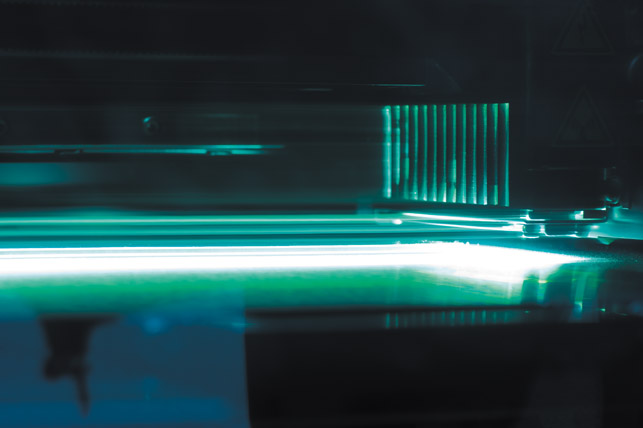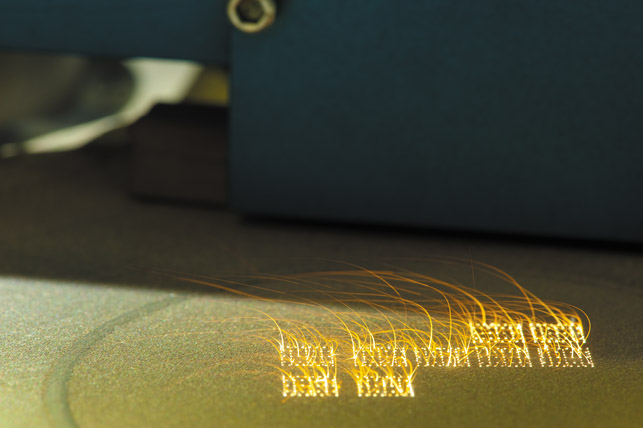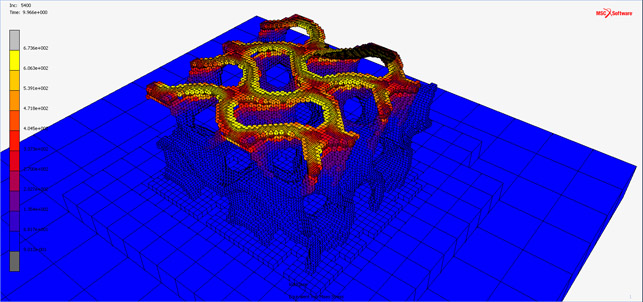
Sophie Jones
Added Scientific launched in 2015 as a spin out from the University of Nottingham’s Centre for Additive Manufacturing (CfAM) and was set up to provide contract research and development, training and consultancy in Additive Manufacturing (AM) and 3D printing.
Its aim is to bring the highest standards of science and engineering to bear on the development and understanding of AM for companies interested in how to best implement the technology.
As such, and with support from government body Innovate UK, Added Scientific recently published a report entitled ‘Risk and Reward: Exploring the entrepreneurs behind the UK’s Additive Manufacturing industry’. Written by Sophie Jones, this short study investigates the barriers to AM adoption by SMEs and presents six case studies of companies that have successfully brought AM into their business.
D3D: In the report mentioned above, there are five themes highlighted as to the common barriers encountered by SMEs in adopting AM: finance; back-up revenue streams; global supply chains; skills, training and recruitment; and industry accreditation. Which of those would you say is the biggest or most urgent?
SJ: Access to finance is a major barrier – without the right information, such as the depreciation of AM machines or market sizing, companies struggle to convince financiers to support their application. Many companies have a secondary revenue stream to support their AM activities while they grow that side of their business. This needs to change if more companies want to access AM technology.
I think skills and training are also extremely important; the talent pool is extremely small so companies can’t simply recruit in the skills they need – they will need to upskill employees across the business if they want to take advantage of the benefits offered.

Electroluminescent printed devices, Centre for Additive Manufacturing (CfAM)
D3D: Could you provide an example of a company that you’ve worked with who has overcome one or some of these barriers to successfully adopt AM?
SJ: The case studies included in the report are all great examples of companies who have overcome barriers to succeed in creating new business models using AM. If you look at companies like Attenborough Dental, they have worked closely with standards organisations to redefine how medical standards are applied to enable patient specific implants. As well as creating new markets for themselves, it allows others to follow in their wake and drives the industry forward.
D3D: In this report you put the spotlight on SMEs, but what about big manufacturers?
SJ: I really believe that adoption of AM needs to be across the board. Innovation in niche applications will come from SMEs such as Hieta Technologies and Metron, which are creating disruptive new designs, while widespread adoption will be driven by the larger companies pushing into their supply chains. Although you don’t always see it publicised, there are many large companies developing conventional manufacturing processes with AM ones; for these big organisations, most of their AM activities are currently in-house as they build skills and capability, but it won’t stay like this forever – I expect to see them bringing more suppliers onboard in the next few years as they do with all other manufacturing techniques. Having an established AM supply base will be critical to the success of this.

Multi-material jetting is a process that may see more widespread use in the future, CfAM
D3D: Having immersed yourself in AM for a number of years, could you share a fact about the industry that people wouldn’t necessarily know about?
SJ: Many of the materials that we use today are legacy materials from when the process was developed – Nylon for SLS is a great example of this. It doesn’t mean it’s the best material, it just worked at an early stage in the technology’s development. We need to look critically at the materials that we currently use and ask if they are the best ones for the job.
D3D: Equally, what is one thing that most people are misinformed about regarding AM?
SJ: When people think about using AM, they often start with the process and try to make materials to fit that process. This is going about it in completely the wrong way – you need to start with your material requirements and develop a process around those. Only in this way can you get the properties that you need.

Selective laser melting, CfAM
D3D: Many would argue that AM is not a sustainable process. What would you say to defend AM? Do its benefits outweigh the evils?
SJ: As a manufacturing process, AM is very rarely sustainable. Whether we’re talking about an SLS build, where you are keeping a build chamber heated over a long period, or vat photopolymerisation processes where you have disposal of materials to contend with, it is not an “environmentally friendly” process. You need to look at the entire lifecycle of an AM product in order to assess it’s sustainability, from raw material through to disposal. In some cases, it appears AM can be more sustainable. For example, lightweight products in aerospace but there is not a huge depth of research in this area and there’s always more than meets the eye.

Triply periodic minimal surface (TPMS) lattices, CfAM
D3D: What is your view on the materials used in AM — they’ve obviously come a long way but would you like to see next?
SJ: Added Scientific focusses heavily on multi-material processes such as material jetting, and this involves a lot of exotic materials such as conductive inks. These are expensive and can take a long time to formulate for the processes we use. I hope to see access to these materials widen, as the process becomes more widely used.

Added Scientific is developing a stand alone software kernel — FLatt Pack — The Functional Lattice Package for Additive Manufacturing
D3D: In your role, you must come across quite a bit of research around AM, have you seen anything that has made you stop in your tracks and think ‘wow!’?
SJ: There’s some really interesting work on the horizon on holographic printing – Maxim Shusteff from Laurence Livermore National Labs presented his work on volumetric fabrication this year at the International Conference on Additive Manufacturing & 3D Printing. This could change everything all over again.
On the adoption of additive manufacturing
Default






